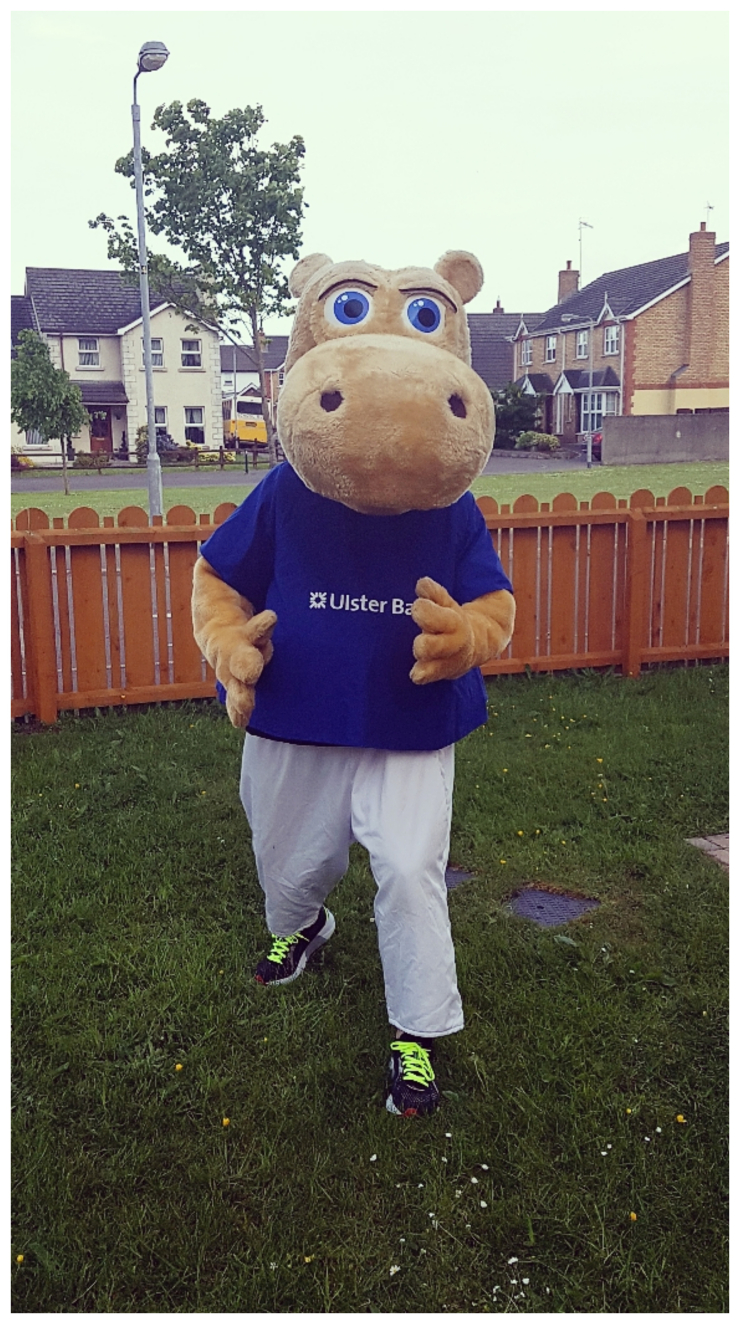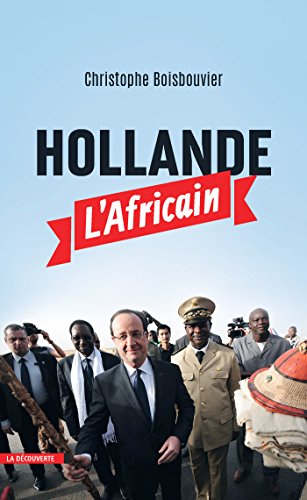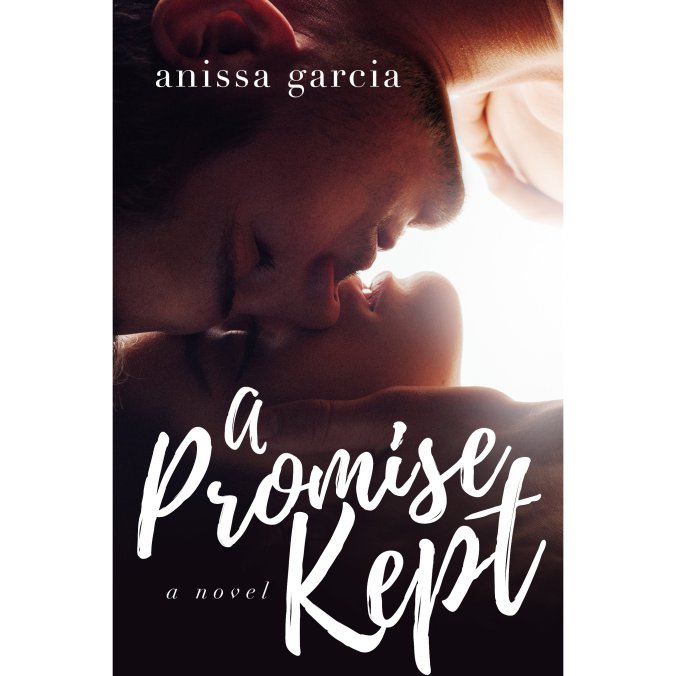1994 was the year punk broke again. For the mainstream, punk had been lying dormant since the early 80’s. The scene was driven underground but had been swelling, ready to crack back open the earth and emerge back into the spotlight. 1994 saw the explosion. Punk had found harmonies and catchy hooks. It’s rebellious nature more matched the everyday feelings of angst ridden teenage boys. Parents suck, girls don’t love me, my friends are cool, skating is cool, parties are cool and getting wasted is cool. School sucks, work sucks, authority sucks and everything else sucks. Riding in on the coattails of Nirvana blowing up the charts and heavy metal on the way out of popularity, punk rock took it’s place and it began with 3 snotty punks out of Berkeley who released their 3rd full length record – Green Day‘s ‘Dookie’.
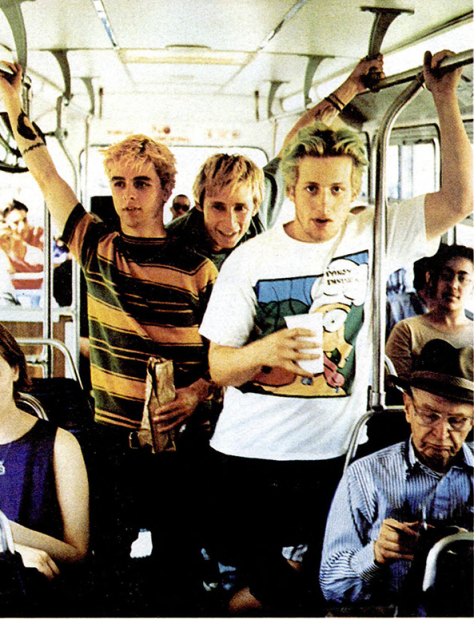
Green Day were darlings of the fames punk club 924 Gilman St. Their Ramones influenced, simplistic punk rock sound with 2 minute songs, 4 chords and catchy sing along choruses were the foundation of the bands sound and reflected what a lot of bands were playing along the West Coast of America. (think The Offspring, NOFX, Rancid, Pennywise, Bad Religion et al) Having gained a substantial following off the back of their first two records ‘Kerplunk’ and ‘1039/Smoothed Out Slappy Hours’, the trio started receiving attention from many major labels who at the time were looking for the next Nirvana.
“We were a wrecking ball that would destroy the house grunge built” – Billie Joe
Being wined and dined by A&R reps, record company execs and just about anyone who would pick up the tab, the group settled on working with Producer and label executive for Warner, Rob Cavallo. Cavallo, having heard some rough demos connected with the band based on a love for making down to earth rock music. After the gluttony of hair metal and now grunge, he wanted something honest and relatable. Green Day were the perfect band to work with and the three agreed, signing onto Warner Bros to the dismay of the punks in the Gilman Street scene. When signing the contact Billie Jo after his name wrote ‘did anyone read this?‘, showing both the trios nativity and confidence in Cavallo. Soon after they hit the studio to start working on their third full length record.
For Green Day, making records was a simple and quick process. Usually restricted by budget, the band would quickly make their records. Now, back by Warner and Cavallo, the band had time and a big budget to make the album. Surprisingly, they didn’t waste their time or money (unlike most contemporys who would’ve been in the same position) Spending 10 -12 hours a day in the studio for 8 weeks, the band worked hard on perfecting the songs they had demoed ensuring the right sounds without losing their punk rock ethic and live sound that made them growing stars in the punk scene. The end result was a raw but polished punk rock album filled with trademark catchy hooks, pop melodies and Billie Joe’s lyrics becoming the hallmark for teenagers across the globe. The band hoped they could sell 50 000 records and make enough to just tour and play shows. It ended up selling 20 million.
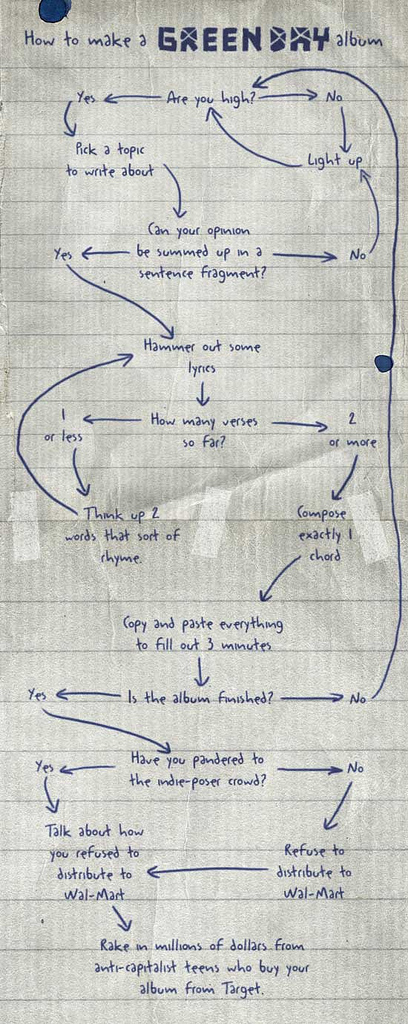
The album was submitted to Warner under the title ‘Liquid Dookie‘ in reference to a all too common occurrence for DIY bands touring. With little money to buy anything other then gas station food, the results ended normally in diarrhoea, which the band would describe as “liquid dookie”. Warner wasn’t going to be able to put that out in chain stores like Best Buy so compromised with the band and released the album as “Dookie”. The record would produce 5 singles for the band leading off with ‘Longview’ with it’s infectious walking bass line, explosive punk rock chorus and lyrics about boredom, restlessness, paranoia and masturbation. The video featured a tweeked out Billie Joe in the bands apartment destroying the couch while watching TV. It epitomized Green Day and the new wave of punk rock coming through the radio.
“When Billie gave me a shuffle beat for ‘Longview,’ I was frying on acid so hard, I was laying up against the wall with my bass lying on my lap. It just came to me. I said, ‘Billie, check this out. Isn’t this the wackiest thing you’ve ever heard?’ Later, it took me a long time to be able to play it, but it made sense when I was on drugs.” – Mike Dirnt on the bass line for “Longview”
Second single was the rerecording of a previously released Green Day song “Welcome To Paradise”. The song first recorded for their last album ‘Kerplunk’ was rerecorded and added to the track listing for ‘Dookie’. While never confirming it, it might have been the bands way of trying to appease the Gilman St scene who labelled the band sell outs for signing to a major label. The club which gave them their initial fame would later ban them from ever playing in it’s graffitied walls again. “Welcome To Paradise” was written by Billie Jo after he had first moved out of home, the song describes living in a shitty apartment in a shitty neighbourhood and while being fearful and anxious, loving the freedom of being away from the parental home. A feeling many teenage kids could relate to. The song was popular to so many kids, inAmerica, many high schools used the track as their soundtrack to end of year Proms and graduations.
“Basket Case” would be the third single and really cemented Green Day into the popular music scene. The infectious melodies and radio friendliness made it a hit for Green Day and launched them into the spotlight even more. The video was a simple narrative of the band being in a mental hospital, heavily medicated who snapped out of it to play the song and then return to their vegetative state. The song touched on Armstrong’s own issues with mental health disorders such as anxiety and panic attacks that had plagued the young singer for most of his adolescent and adult live. It also challenged the norm with the third verse suggestion the character (Armstrong) had illicit a male prostitute who was sick of hearing about his problems. Something he liked to do throughout the themes on the album such as bisexuality on “Coming Clean”, masturbation in “Longview” and terrorist attacks in “Having A Blast”.
“When I Come Around” was the fourth single off the album and came in riding off the coattails of the success to “Basket Case”. It’s the track that pushes the realm of classic rock in sound more than the punk rock nature of the rest of the record. The song lyrically is centred around a girl and a break up. Based on Billie Jo’s own break up suffered before the recording of the album, the lyrics ooze slacker, don’t care mentality of the guy. The video for the song was rarely shown as live footage from the Woodstock show was used more often as it showcased the mud and the madness of the Woodstock event in 1994.
The last single was the track “She”. Also inspired by a ex girlfriend and is Billie Jo’s response to a feminist poem also titled “She”. The track looks more at the hardships and struggles that are a reality for most younger women in todays world and that it’s easy to dictate a way of live when your living comfortably in middle age. While the track didn’t get the same chart attention as the previous singles, the song was probably the most mature of tracks from the album.
The album was a landmark for the resurgence of punk in 1994. “Dookie” along with The Offspring’s “Nitro” were the perfect response to the Seattle grunge scene which faded out of the mainstream the moment Kurt Cobain died. While grunge capitalised on teenage depression and don’t care attitude, Green Day and punk rock took it, added a fast double kick drum beat, some major chords and lifted up the tempo. They still spoke the same language but with punk, it gave you hope, while grunge didn’t. Even the attitude behind the track “F.O.D”, the last listed cut on the “Dookie” album was really the same ‘Fuck You’ as say Rage Against The Machine‘s “Killing In The Name” but done in under 2 minutes and left you uplifted and resolved instead of more pissed off.
“Dookie” would go on to inspire many bands and helped revive punk rock to a broader audience. It lifted the scene from the underground and brought a multitude of bands with their influence from Blink 182, emo darlings My Chemical Romance to new bands like FIDLAR. The soundtrack to youthful boredom and it’s still as catchy as fuck today as it was back in 1994.
“Can we talk about something else besides the underground?” Billie Jo Armstrong
Share this:


